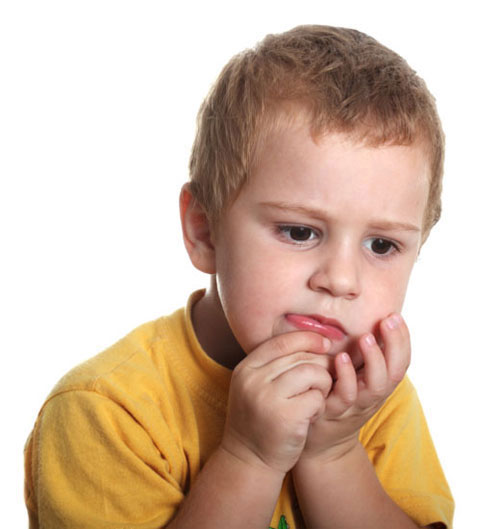You dont have to feel helpless or appear cruel when dealing with your childs toothache. Try our gentle (and subtle) approach to taking care of the pain. Read on for tips and on easing the pain. Toothaches can be really hard on your little ones. Dealing with the pain means restless nights, nightmares and loss of sleep for your child and your family. Whats more, due to the extreme level of pain, your child may resist your efforts in bringing him relief. This is because, from a childs point of view, the cure (any intervention requiring him to open his mouth) is scarier, and more painful, than the pain itself. It is important that you address the matter in a swift but gentle manner, without provoking fear or anxiety in your child. In this articleUnderstanding the causes of toothacheMummy it hurts! Whats causing the pain?Home remedies that workGetting ready for the dentist But I dont want to go!Make it part of a tripIntroduce him to the dentistStay by your childBreaks are importantUse of anaesthesiaDo not threaten your childReward your childUnderstanding the causes of toothache The basic fault may lie in your childs diet: candy, chocolate pastries and soft drinks contain refined carbohydrates and sugar in various forms. Bacteria present in the mouth breakdown sugar into acids, which combine with the calcium in the enamel. This causes decay or erosion of teeth leading to cavities, gum disease or even exposed tooth roots. Toothache occurs when the decay has penetrated the pulp chamber of the tooth or is very close to it. This is the chamber which contains the nerves and tiny blood vessels and is especially sensitive to decay or any kind of disturbance. "Mummy it hurts!" Whats causing the pain? Is it a sharp pain, or just soreness around the tooth? Children tend to either hide and keep quiet about the toothache or exaggerate the pain to win favours; so it is best to ascertain the facts of the matter. Instead of a tooth, the pain may be due to mouth ulcers, swelling in the gums (Gingivitis or Periodontitis) or any other common form of cold sore, which affects the mouth area. Ask your child to point out the source of the ache. When he opens his mouth, check for red spots and swelling inside his cheeks. If these are not visible, chances are you have a toothache on your hands. Get an appointment with your family dentist immediately. Home remedies that work Using a home remedy for toothaches might help you stop the excruciating pain. But this is only a stop-gap solution until you are able to visit your dentist. Here are few easy-to-use home remedies: Rub garlic, cashew or clove oil (laung ka tel) on the affected tooth. If your child protests, put the oil on his index finger and tell him to apply the oil gently on the affected area. This should relieve the pain—it might even cure it. Make small pieces of potato and cool them in your fridge. Give you child pieces of cold potato and tell him to place them inside his mouth on the tooth that is paining. The cold will sooth the pain. This should work with cucumber too—just as long as it is cold. Place a little wad of dried mint leaf around the tooth and make your child spit out every few minutes. Peppermint is good for relieving pain. Do not pull out a loose tooth. Let your child judge if the tooth is loose enough to come out and let him try to do so himself. If all else fails and your childs mouth becomes a no-entry zone, just apply a warm damp towel to his cheeks from the outside. If you are buying over-the-counter pain medication for your child, remember that acetaminophen (not aspirin) should be used for children and teenagers. Getting ready for the dentist: "But I dont want to go!" Once your child has received temporary relief, she may try to delay the trip to the dentist. Dont postpone the matter—your child needs (and deserves) immediate and necessary dental care. If it is an abscess or cavity, it must be taken care of. Here are a few ways to deal with the anxiety of a visit to the dentist: Make it part of a trip: Make the visit to the dentist a part of your trip to your childs favourite garden or mall. This way the dental appointment will just seem like a quick stopover. Introduce him to the dentist: It is best if your child sees the face behind the dentists mask. Make sure your dentist is child-friendly and uses methods that involve minimum pain. Let your child take a favourite toy along to help make the procedure less stressful. Keep him focused and distracted from seeing the long sharp instruments. Stay by your child: Your presence is reassuring to your child. Do not ever leave him alone in the dentists office. Stay with him (holding hands if necessary) throughout the procedure. Breaks are important: The procedure will involve a lot of spitting. So make sure your child gets to rest in between. Talk to him and reassure him that it will all be over soon. Use of anaesthesia: Most dentists use a local anaesthesia to take the edge off the pain. But let your dentist decide whether this is necessary. Do not threaten your child: Hitting, threatening and screaming are not going to help. This will only confuse him and make him go into a shell. Reward your child: Appreciate your childs efforts in remaining calm in the face of pain. Reward him adequately with a small present and let him take a day off from school to rest, if necessary
You don't have to feel helpless or appear cruel when dealing with your child's toothache. Try our gentle (and subtle) approach to taking care of the pain. Read on for tips and on easing the pain.
Toothaches can be really hard on your little ones. Dealing with the pain means restless nights, nightmares and loss of sleep for your child and your family. What's more, due to the extreme level of pain, your child may resist your efforts in bringing him relief. This is because, from a child's point of view, the cure (any intervention requiring him to open his mouth) is scarier, and more painful, than the pain itself.
It is important that you address the matter in a swift but gentle manner, without provoking fear or anxiety in your child.
Understanding the causes of toothache
The basic fault may lie in your child's diet: candy, chocolate pastries and soft drinks contain refined carbohydrates and sugar in various forms. Bacteria present in the mouth breakdown sugar into acids, which combine with the calcium in the enamel. This causes decay or erosion of teeth leading to cavities, gum disease or even exposed tooth roots.
Toothache occurs when the decay has penetrated the pulp chamber of the tooth or is very close to it. This is the chamber which contains the nerves and tiny blood vessels and is especially sensitive to decay or any kind of disturbance.
"Mummy it hurts!" What's causing the pain?
Is it a sharp pain, or just soreness around the tooth? Children tend to either hide and keep quiet about the toothache or exaggerate the pain to win favours; so it is best to ascertain the facts of the matter.
Instead of a tooth, the pain may be due to mouth ulcers, swelling in the gums (Gingivitis or Periodontitis) or any other common form of cold sore, which affects the mouth area.
Ask your child to point out the source of the ache. When he opens his mouth, check for red spots and swelling inside his cheeks. If these are not visible, chances are you have a toothache on your hands. Get an appointment with your family dentist immediately.
Home remedies that work
Using a home remedy for toothaches might help you stop the excruciating pain. But this is only a stop-gap solution until you are able to visit your dentist.
Here are few easy-to-use home remedies:
- Rub garlic, cashew or clove oil (laung ka tel) on the affected tooth. If your child protests, put the oil on his index finger and tell him to apply the oil gently on the affected area. This should relieve the pain—it might even cure it.
- Make small pieces of potato and cool them in your fridge. Give you child pieces of cold potato and tell him to place them inside his mouth on the tooth that is paining. The cold will sooth the pain. This should work with cucumber too—just as long as it is cold.
- Place a little wad of dried mint leaf around the tooth and make your child spit out every few minutes. Peppermint is good for relieving pain.
- Do not pull out a loose tooth. Let your child judge if the tooth is loose enough to come out and let him try to do so himself.
- If all else fails and your child's mouth becomes a no-entry zone, just apply a warm damp towel to his cheeks from the outside.
If you are buying over-the-counter pain medication for your child, remember that acetaminophen (not aspirin) should be used for children and teenagers.
Getting ready for the dentist: "But I don't want to go!"
Once your child has received temporary relief, she may try to delay the trip to the dentist. Don't postpone the matter—your child needs (and deserves) immediate and necessary dental care. If it is an abscess or cavity, it
must be taken care of.
Here are a few ways to deal with the anxiety of a visit to the dentist:
Make it part of a trip: Make the visit to the dentist a part of your trip to your child's favourite garden or mall. This way the dental appointment will just seem like a quick stopover.
Introduce him to the dentist: It is best if your child sees the face behind the dentist's mask. Make sure your dentist is child-friendly and uses methods that involve minimum pain. Let your child take a favourite toy along to help make the procedure less stressful. Keep him focused and distracted from seeing the long sharp instruments.
Stay by your child: Your presence is reassuring to your child. Do not ever leave him alone in the dentist's office. Stay with him (holding hands if necessary) throughout the procedure.
Breaks are important: The procedure will involve a lot of spitting. So make sure your child gets to rest in between. Talk to him and reassure him that it will all be over soon.
Use of anaesthesia: Most dentists use a local anaesthesia to take the edge off the pain. But let your dentist decide whether this is necessary.
Do not threaten your child: Hitting, threatening and screaming are not going to help. This will only confuse him and make him go into a shell.
Reward your child: Appreciate your child's efforts in remaining calm in the face of pain. Reward him adequately with a small present and let him take a day off from school to rest, if necessary
































